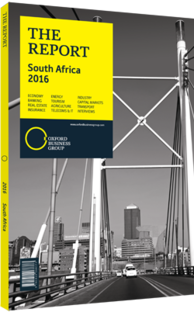South Africa prioritising beneficiation to retain greater share of mineral value in-country
The development of key mining value chains, known as beneficiation, is a major objective for the government. While mining operators support the concept in theory, the practical application has proven more difficult and made the related policies in the pending Mineral and Petroleum Resources Development Act (MPRDA) amendment and the Department of Trade and Industry’s Mineral Beneficiation Action Plan (MBAP) a point of contention.
New Terms
In January 2015, President Jacob Zuma rejected the MPRDA Amendment Bill, which would have given the minister of mineral resources the sole discretion to mandate the beneficiation of minerals, regardless of economic viability. The amendment would have made beneficiation of designated minerals compulsory, requiring miners to sell a percentage of their produced “designated minerals” to the local market at a “mine gate price or agreed price”, whose basis or formula is unspecified. Failure to comply would result in losing the right to export designated minerals and a substantial fine.
President Zuma’s rejection of the bill comes in part because the amendment could potentially be a breach of the General Agreement on Tariffs and Trade of the World Trade Organisation, according to Peter Leon, head of Africa mining and energy at law firm Webber Wentzel’s. Additionally, South Africa has tried its hand at beneficiation legislation before, under the Diamonds Second Amendment Act of 2005, which mandated that diamond producers set aside a percentage of production to African Romance, a state-backed beneficiation diamond firm. While the amount of beneficiated diamonds rose from 140,000 carats (cts) in 2008 to 150,175 cts in 2012, costs of $50-100 per ct to cut and polish a diamond were high compared to competitors like India, where it costs $8 per ct. African Romance subsequently folded in 2013.
Value Chains
However, there is still potential for a successful beneficiation policy. The MBAP, whose implementation is tied to the MPRDA amendment bill, seeks local value-addition across five mineral value-chains: iron ore and steel, platinum-group metals, polymers, titanium and mining inputs. Mosa Mabuza, deputy director-general of mineral policy at the Department of Mineral Resources, has indicated that the plan takes a long-term approach, saying, “In most products you probably have at least five different steps in the full value chain. Our goal is not to develop all at once, but rather one step at a time.”
Mixed Results
Development of the steel industry’s value chain has seen mixed results. In late 2014, the Industrial Development Corporation and Hebei Iron and Steel Group signed a memorandum of understanding to open a new steel mill in Phalaborwa. However, Evraz Steel, responsible for around 10% of South Africa’s steel output, filed for bankruptcy in April 2015. Furthermore, ArcelorMittal, the market leader with some 70% of output, is also facing issues in sourcing its steel inputs domestically due to pricing disagreements with iron-ore producer Kumba.
In the value chain for precious metals, South Africa has achieved a 15% market share of catalytic converters used in automobiles and trucks, while Mabuza points to a recent decline in the use of aluminium in airplanes as a sign of market potential for titanium beneficiation. Meanwhile, Michal Kotze, Africa mining industry leader at PwC, believes in the potential for small-scale industries with high-margins, such as diamond polishing and platinum refining.
“Global oversupply in large-scale industries like steel will make it difficult for South Africa if it doesn’t already have an established comparative advantage, as producing cheaply at economies of scale becomes the name of the game, which we cannot do at the moment,” Kotze said. A shortage of skills, high power costs and infrastructure bottlenecks are the main impediments to the rapid, cost-competitive roll-out of value-added industries in the country, he added.
You have reached the limit of premium articles you can view for free.
Choose from the options below to purchase print or digital editions of our Reports. You can also purchase a website subscription giving you unlimited access to all of our Reports online for 12 months.
If you have already purchased this Report or have a website subscription, please login to continue.

